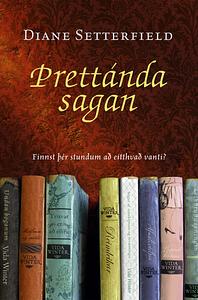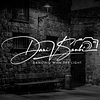Take a photo of a barcode or cover
emotional
sad
slow-paced
El cuento número trece de Diane Setterfield. Para el #reto20pecera en la categoría del libro nº 20 de mis pendientes.
Me ha gustado esta novela en la que no hay castillos ni criaturas, pero hay angustia, depresión y componente emocional. Soledad, mansiones con secretos, y sobre todo un misterio que resolver, un cuento jamás contado y conexiones entre la vida y la muerte. Un relato dentro de otro relato. “Un nacimiento no es en realidad, una introducción. Nuestra vida, cuando empieza, no es realmente nuestra, sino la continuación de la historia de otro”. Esta frase me ha atrapado durante todo el libro. Es mi primer libro de esta autora, pero no será el último.
Me ha gustado esta novela en la que no hay castillos ni criaturas, pero hay angustia, depresión y componente emocional. Soledad, mansiones con secretos, y sobre todo un misterio que resolver, un cuento jamás contado y conexiones entre la vida y la muerte. Un relato dentro de otro relato. “Un nacimiento no es en realidad, una introducción. Nuestra vida, cuando empieza, no es realmente nuestra, sino la continuación de la historia de otro”. Esta frase me ha atrapado durante todo el libro. Es mi primer libro de esta autora, pero no será el último.
emotional
inspiring
mysterious
slow-paced
adventurous
emotional
mysterious
tense
fast-paced
Plot or Character Driven:
A mix
Strong character development:
Yes
Loveable characters:
Yes
Diverse cast of characters:
Complicated
Flaws of characters a main focus:
Yes
dark
mysterious
sad
medium-paced
Plot or Character Driven:
A mix
Strong character development:
Complicated
Loveable characters:
No
Diverse cast of characters:
No
Flaws of characters a main focus:
Complicated
dark
emotional
mysterious
sad
tense
medium-paced
Plot or Character Driven:
A mix
Strong character development:
Yes
Loveable characters:
Complicated
Diverse cast of characters:
Yes
Flaws of characters a main focus:
Complicated
dark
emotional
mysterious
reflective
Margaret Lea is perfectly content working in her father's bookshop, reading old novels, researching historical records, and writing biographies of the long-deceased. But she carries an old wound within her - the death at birth of her conjoined twin. Her parents hid this lost sister from Margaret, until she stumbled across the paperwork. Her sister's birth and death certificates finally told Margaret the story of the hole she carried within herself, the unshakeable feeling of loss that finally had an explanation.
One day Margaret receives a letter from Vida Winter, a prolific and beloved author, asking Margaret to become Winter's biographer. This is noteworthy not just because Margaret is, by her own description, merely a talented amateur. Winter's request is singular because she has spent her whole life avoiding the attempts of biographers to pry into her personal life, telling them elaborate and contradictory tales, each different from the last, and keeping her actual history secret. Why, then, does the aging author want to tell her story now? Can Margaret trust her to tell her the truth of her life, and not just another tall tale? Why did she chose Margaret, of all people, to confide in?
Though Margaret is at first reluctant to accept the position, Vida promises her a tale of twins, and Margaret cannot resist. What follows is the slow unfolding of a mystery, a story not only of twins but of ghosts, loss, obsession, and gothic strangeness. Through elegant and timeless prose, expert pacing, and vivid characters, Diane Setterfield painstakingly reveals not only the history of Vida Winter but also the aftermath of her story, the growing connection between Margaret and Vida, and the liberation that can come from confronting those parts of our past that haunt us.
One day Margaret receives a letter from Vida Winter, a prolific and beloved author, asking Margaret to become Winter's biographer. This is noteworthy not just because Margaret is, by her own description, merely a talented amateur. Winter's request is singular because she has spent her whole life avoiding the attempts of biographers to pry into her personal life, telling them elaborate and contradictory tales, each different from the last, and keeping her actual history secret. Why, then, does the aging author want to tell her story now? Can Margaret trust her to tell her the truth of her life, and not just another tall tale? Why did she chose Margaret, of all people, to confide in?
Though Margaret is at first reluctant to accept the position, Vida promises her a tale of twins, and Margaret cannot resist. What follows is the slow unfolding of a mystery, a story not only of twins but of ghosts, loss, obsession, and gothic strangeness. Through elegant and timeless prose, expert pacing, and vivid characters, Diane Setterfield painstakingly reveals not only the history of Vida Winter but also the aftermath of her story, the growing connection between Margaret and Vida, and the liberation that can come from confronting those parts of our past that haunt us.
emotional
mysterious
tense
slow-paced
Plot or Character Driven:
Character
Strong character development:
Yes
dark
emotional
mysterious
sad
medium-paced
Plot or Character Driven:
Character
Strong character development:
Yes
Loveable characters:
Yes
Diverse cast of characters:
Yes
Flaws of characters a main focus:
No
“There is something about words. In expert hands, manipulated deftly, they take you prisoner. Wind themselves around your limbs like spider silk, and when you are so enthralled you cannot move, they pierce your skin, enter your blood, numb your thoughts. Inside you they work their magic.”
This is a perfect gothic mystery for bibliophiles as its a story woven with shadows, secrets, and a deep love of books. From the first page, Setterfield draws the reader into a world of haunted houses, family curses, and unreliable narrators, all while paying homage to the great gothic tradition that came before her.
The novel follows Margaret Lea, a quiet bookseller’s daughter, summoned to write the biography of the enigmatic and wildly successful novelist Vida Winter. What begins as a simple literary project quickly becomes an unravelling of dark family histories, twisted identities, and long-buried truths. It is the kind of novel that beckons the reader to curl up by candlelight, as if the atmosphere itself is part of the storytelling.
For lovers of classic literature, “The Thirteenth Tale” is particularly rewarding. It is filled with subtle and overt references to the great gothic works like Wilkie Collins’s “The Woman in White” with its mysteries of identity and inheritance, the tempestuous passions of “Wuthering Heights”, and above all, the quiet endurance and fiery spirit of “Jane Eyre”. Setterfield doesn’t just allude to these novels; she engages in a literary dialogue with them, shaping her own tale in the same haunting and romantic tradition.
Setterfield’s prose is elegant (often times gorgeous!), and her pacing deliberate in a way that mirrors the old gothic novels, slowly layering atmosphere, tension, and dread. Yet, at its heart, the book is also a meditation on reading and storytelling itself: why we read, why stories matter, and how the narratives we inherit shape who we are.
A love letter to literature wrapped in a mystery, “The Thirteenth Tale” is the kind of novel that lingers, much like the classics it honors. It is as much about the ghosts that haunt families as the ghosts that live in books and for a bibliophile, it’s an irresistible combination.
Graphic: Animal death, Child death, Death, Death of parent
Moderate: Incest, Kidnapping




